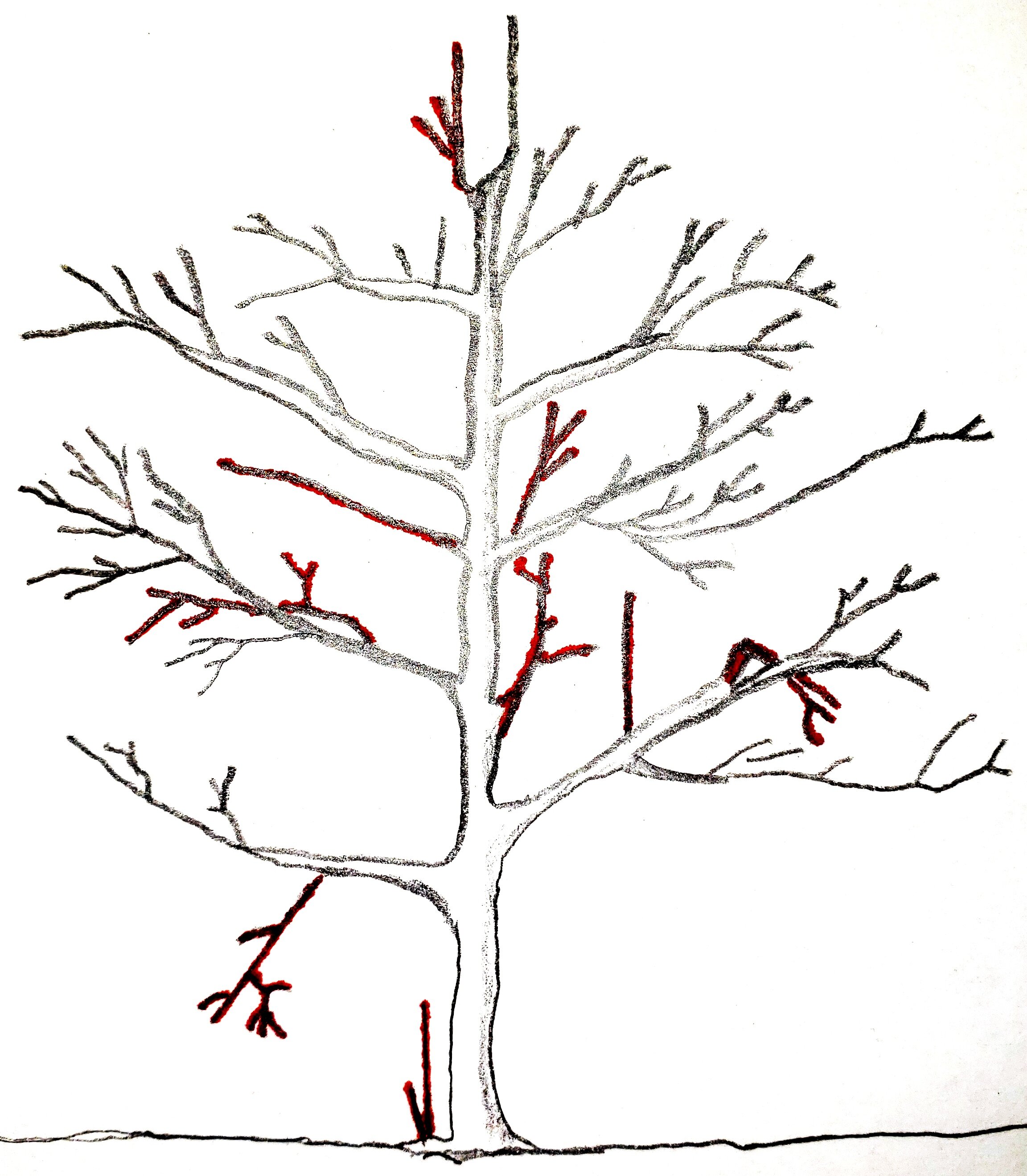Pruning Young Trees
Fruit trees such as apples, pears, cherries and plums need regular pruning in their first few years to develop healthy growth and properly spaced branches. Then they should only require minor pruning there-after. There are many different ways to prune fruit trees that result in good quality trees such as central leader, open center, and espalier styles. For the sake of simplicity we’re going to take a look at central leader training, which results in an attractive fruit tree for ornamental home use.
It is important to be willing to sacrifice maximum fruit production for the first few years in order to establish the proper form for your fruit tree. Sure it’s a bummer to reduce the tree’s possible yield, but this will insure greater fruit production in future years. As they say, the best time to plant a tree is ten years ago, and the second best time is now!
A tree pruned using the central leader method will have a somewhat Christmas-tree shape at maturity, with layers of the lower branches longer than the upper branches, and terminating in a single leader at the top. Each layer of branches should have 3 or 4 branches that radiate from the trunk fairly evenly, not directly across from or above one another. The next layer of branches should start 18 to 24 inches above the one below to allow for light to penetrate to the interior. The layers of branches alternating with open spaces continue up to the desired height of the tree. To create this shape requires careful pruning for the first several years.
When pruning Fruit trees, the following types of growth should be removed (highlighted in red on the diagram):
Suckers
Broken branches or stubs
Branches that grow downward
Crossing over or rubbing branches (remove the weaker branch)
Shaded or interior branches
Competing leaders
Long slender growth in the inner part of the tree
Whorls (branches on the exact same plane as another branch)
Any diseased or dead branches
Trees pruned heavily in winter respond in spring with many vigorous shoots called water sprouts, identifiable by their distinctly straight-up growth. These are undesirable and will need to be re-moved, causing a cycle of heavy pruning and vigorous re-growth. Heavy winter pruning can also lead to excessive vegetative growth that can reduce fruit development. Winter pruning should be restricted to light pruning and removal of diseased or broken branches.
When winter pruning, prune as late in winter as possible to avoid winter damage. Apple and pecan trees should be pruned first, followed by cherry, peach, and plum trees.
Summer pruning removes energy-producing portions of the tree and can reduce tree growth. Summer pruning should be limited to removing the upright and vigorous current season's growth using thinning cuts. Summer pruning can be started as soon as buds begin to grow, though it’s usually best to wait until new growth is several inches long. This is particularly true with young trees, which are more easily damaged by late cold snaps. To minimize the potential for winter injury, summer pruning should not be done after mid-August.

